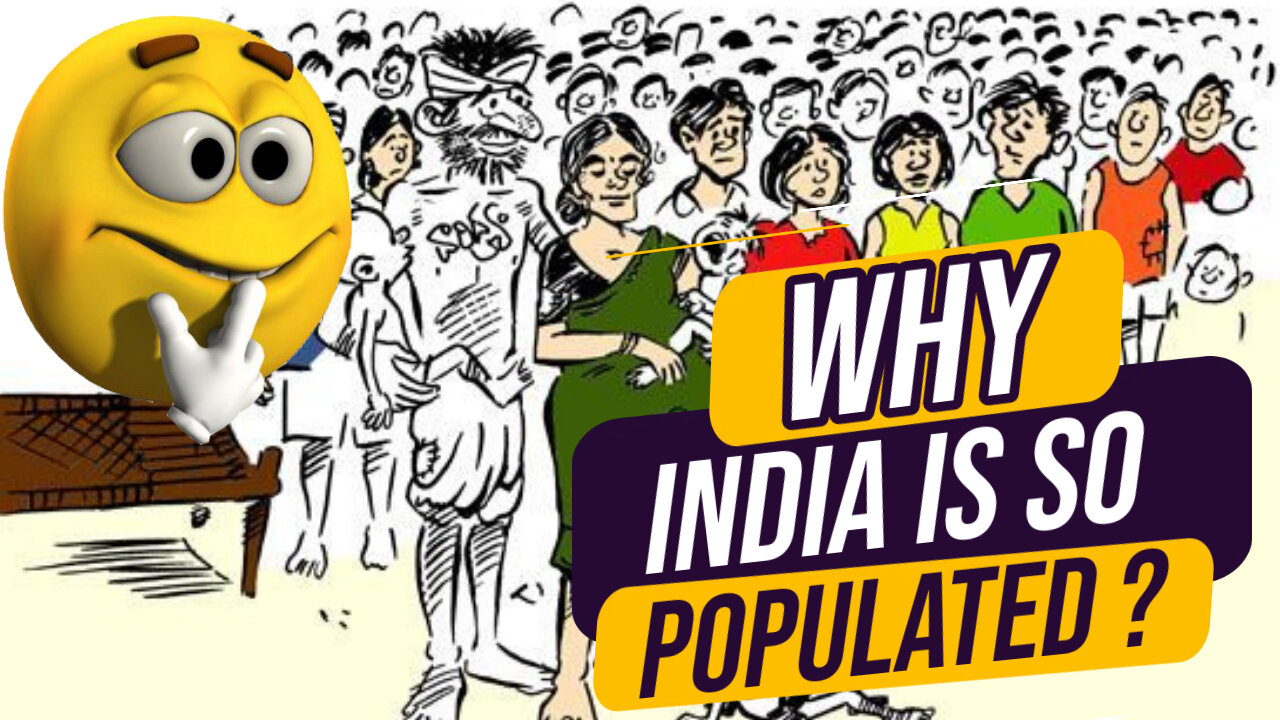Premium Only Content

Why India Is So Populated
Why India Is So Populated. India, with a population exceeding 1.4 billion people, is the second most populous country in the world, closely following China. The sheer scale of India’s population often leads to questions about the underlying reasons behind such rapid and sustained population growth. Understanding why India is so populated involves examining a combination of historical, cultural, social, and economic factors. This video delves into these aspects to provide a comprehensive view of the population dynamics in India.
During British colonial rule (1757-1947), India's economic structure and demographic patterns underwent significant changes. The colonial administration's focus on cash crops and the disruption of traditional agricultural practices led to periods of famine, but it also indirectly set the stage for a population increase in the post-independence era. After gaining independence in 1947, India saw improvements in healthcare, sanitation, and food security, which contributed to a decline in mortality rates and a subsequent population surge.
In Indian culture, the family is a central social unit, and having children is often seen as a sign of prosperity and social status. Larger families are traditionally valued, with children seen as a source of support for parents in old age. This cultural emphasis on family and children has historically contributed to higher birth rates. Early marriage is still prevalent in many parts of India, particularly in rural areas. Early marriage often leads to early and more prolonged periods of childbearing, contributing to higher fertility rates. Despite legal frameworks aiming to curb child marriage, socio-economic factors and traditional practices perpetuate this trend.
The reasons why India is so populated are multifaceted, encompassing historical, cultural, social, and economic factors. Historical changes, cultural values surrounding family, early marriage, economic conditions, and governmental efforts all interplay to shape the demographic landscape. Understanding these complex dynamics is essential for addressing the challenges and opportunities that come with managing such a vast and diverse population. As India continues to develop, targeted policies and education can play crucial roles in balancing population growth with sustainable development.
-
 2:00:20
2:00:20
Glenn Greenwald
17 hours agoThe View from Moscow: Key Russian Analyst Aleksandr Dugin on Trump, Ukraine, Russia, and Globalism | SYSTEM UPDATE #414
153K67 -
 1:10:55
1:10:55
Donald Trump Jr.
14 hours agoBREAKING NEWS: My Father Revokes Biden-Maduro Oil License, LIVE with Maria Corina Machado | Triggered Ep.220
227K202 -
 1:25:29
1:25:29
Sarah Westall
13 hours agoX-Files True History, Project Blue Beam, Cabal Faction War w/ Former FBI Agent John DeSouza
99.8K38 -
 7:03:49
7:03:49
Dr Disrespect
20 hours ago🔴LIVE - DR DISRESPECT - NEW PC VS. DELTA FORCE - MAX SETTINGS
185K29 -
 49:04
49:04
Lights, Camera, Barstool
1 day agoIs The Monkey The Worst Movie Of The Year?? + Amazon Gets Bond
85.7K5 -
 24:19
24:19
Adam Carolla
1 day agoDiddy’s Legal Drama Escalates, Smuggler Caught Hiding WHAT? + Philly Eagles & The White House #news
158K22 -
 10:12
10:12
Mike Rowe
2 days agoClint Hill: What A Man. What A Life. | The Way I Heard It with Mike Rowe
149K17 -
 1:31:52
1:31:52
Redacted News
15 hours agoBOMBSHELL! This is war! FBI whistleblowers reveal Epstein files being destroyed? | Redacted News
215K392 -
 48:55
48:55
Candace Show Podcast
16 hours agoSTOP EVERYTHING. They FINALLY Mentioned ME In The Blake Lively Lawsuit! | Candace Ep 152
184K141 -
 1:02:51
1:02:51
In The Litter Box w/ Jewels & Catturd
1 day agoWhere are the Epstein Files? | In the Litter Box w/ Jewels & Catturd – Ep. 750 – 2/26/2025
125K91